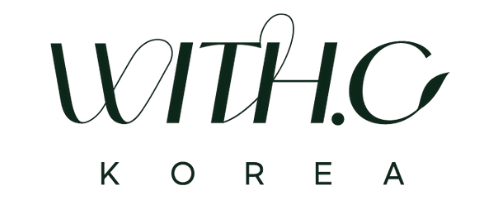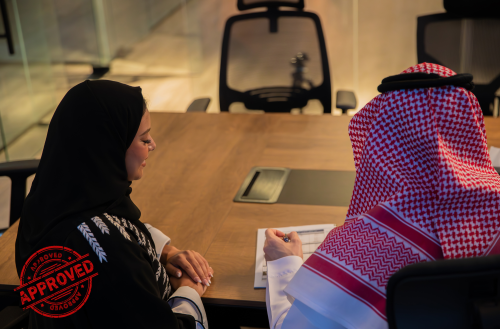The Middle Eastern beauty market is rapidly growing, and exports of Korean cosmetics are also thriving.
To successfully enter this market, it is essential to understand the regulatory agencies, standards, and certification processes of each country.
This article summarizes the key cosmetics regulations and certification processes of the middle eastern cosmetics export for the UAE and Saudi Arabia, focusing on the Gulf Cooperation Council (GCC) and Gulf Standardization Organization (GSO) regulations.

1. Overview of Middle Eastern Cosmetics Regulations: GCC & GSO
1) GCC (Gulf Cooperation Council): A regional cooperative organization comprising six Gulf countries: Saudi Arabia, UAE, Bahrain, Oman, Qatar, and Kuwait.
2) GSO (GCC Standardization Organization): An organization established to define standards and regulations for seven countries, including the six GCC nations and Yemen. As a result, the basic regulations for Middle Eastern cosmetics adhere to the GSO 1943/2021 standard.
[Basic Regulations for Middle Eastern Cosmetics]
The most representative standard is GSO 1943/2021, which outlines basic safety regulations for cosmetics. These regulations largely adopt European standards and are very similar to the EU Regulation 1223/2009.
1) Key Requirements of GSO 1943/2021:
a. Prohibition of the use of pork and its derivatives.
b. Prohibition of the use of contaminated or degraded substances.
c. Prohibition of graphics, images, or texts that contradict Islamic law and social values.
2) GSO 2528/2016:
a. Guidelines for claims on cosmetics and personal care products.
b. While adhering to the common criteria of EU cosmetic regulations, the regulation adds a list of prohibited claims.
3) GSO/ISO 22716:
a. GMP (Good Manufacturing Practices) standards for cosmetic production.
Despite these commonalities, cosmetics regulations vary by country within the Middle East, with labeling being a notable example. In the UAE, labeling is primarily done in English, while in Saudi Arabia, labeling in Arabic is standard, with English as an optional addition.
The GCC labeling regulations shared by both countries include the following information: brand name, product name, manufacturer and distributor details, country of origin, content volume, product expiration date, usage instructions, precautions, batch number or lot number, full ingredient list, and storage method.
Now, let’s delve into the regulatory agencies and certification methods for each country.
1. UAE (United Arab Emirates)
1.1 Regulatory Agency: MOIAT (Ministry of Industry and Advanced Technology)
1) A government agency overseeing industry-wide certifications.
2) Certifications are practically performed by private global certification bodies under MOIAT’s supervision.
2.2 Summary of Certification and Registration Procedures
[Trademark and Company Registration]
1) Trademark registration can be applied for online through the UAE Ministry of Economy (MOE).
2) To sell in the UAE, a local corporation or distributor is required.
3) If there is no local corporation, sales can be conducted through a partner company or agent.
[Product Testing and Certification]
1) ECAS (Emirates Conformity Assessment Scheme):
a. Mandatory conformity certification for UAE.
b. Duration: 4-6 weeks.
c. Validity: 1 year; renewal must be applied for 2 months before expiration.
d. Required Documents:
✔️ Certification application form.
✔️ Industrial and trade license.
✔️ Free Sale Certificate.
✔️ Full ingredient list (including INCI names)
✔️ Nano-material declaration form.
✔️ Physical analysis report of the product.
✔️ GMP certificate.
✔️ Product testing certificate.
✔️ Optional organic/halal certification.
✔️ Declaration of submitted stability report.
✔️ Product label design.
2) EQM (Emirates Quality Mark):
a. Certification for the entire production process.
b. Unlike ECAS, EQM is not mandatory.
c. Requires manufacturing facility inspections.
d. Duration: 8-20 weeks.
e. Validity: 3 years.
f. EQM certification holders may be exempted from ECAS for products produced at the certified facility.
[Dubai Municipality Product Registration]
a. After ECAS/EQM certification, products must be registered with the Dubai Municipality.
b. Duration: Approximately 15 days.
c. Validity: 5 years.
d. Online application is available (local corporation required).
e. Required Documents:
f. Registration application form.
✔️ UAE corporate business registration certificate.
✔️ Full ingredient list.
✔️ GMP certificate.
✔️ Test report.
✔️ Optional organic/halal certification.
✔️ Product packaging artwork.
✔️ Glass container test report (if applicable).
[Export and Customs Clearance]
a. May 2024: Official signing of the Korea-UAE CEPA.
b. Immediate tariff elimination for HS Codes 330410~330491 (lip, eye makeup, nail polish).
c. Gradual elimination of tariffs (up to 10 years) for HS Code 330499 (other skincare, sunscreen products).
2. Saudi Arabia
2.1 Regulatory Agency: SFDA (Saudi Food & Drug Authority)
Operates a regulatory system based on GSO standards while adapting them to Saudi-specific requirements. Cosmetics fall under the Drug Sector within the SFDA.
2.2 Certification and Reporting Procedures
[Appointing a Local Representative (RP)]
a. Reporting and CoC issuance must be conducted by a local agent.
b. Importer, local corporation, or agency representative required.
c. SFDA account and business registration for cosmetics are mandatory.
d. SFDA does not conduct audits on cosmetic manufacturers, making the registration process relatively simple.
[GHAD Registration Number Issuance]
a. Saudi Arabia’s electronic cosmetics registration system (similar to EU’s CPNP).
b. Covers various areas, including export clearance, domestic manufacturing permits, warehouse storage permits, and product reporting.
c. GHAD registration number is required for subsequent CoC issuance and must appear on all CoCs for cosmetics.
d. Registration Process:
✔️ Create a GHAD account.
✔️ Enter account and manufacturer information.
✔️ Register product information.
✔️ SFDA review.
✔️ Issuance of registration number.
✔️ Compliance with SASO standards and proof of absence of harmful substances required for reporting.
[FASEH CoC Application]
a. SFDA’s customs clearance platform.
b. Integrates with GHAD for importers to log in using GHAD information.
c. Testing and CoC issuance performed by conformity assessment bodies.
d. Required Documents:
✔️ CoC application form.
✔️ Declaration of conformity.
✔️ Invoice.
✔️ Test report and label image.
✔️ GHAD registration number.
✔️ FDA reference license (if applicable).
[Export and Customs Clearance]
a. December 2023: Conclusion of Korea-GCC FTA → Tariff elimination upon effectuation.
b. Simplified submission of origin proof documentation: Reduced from 8 types to 1 type.
✅ Final Note: Halal Certification
When thinking about the Middle East, halal certification often comes to mind. Is halal certification mandatory in Saudi Arabia and the UAE? As of now, it is not required in these two countries. However, Indonesia has decided to make halal certification mandatory starting October 17, 2025, showing a different approach. In the Middle Eastern market, halal certification can enhance consumer trust and serve as a competitive marketing advantage.
The Middle Eastern market combines high growth potential with strict and complex certification systems. WITH.C KOREA continuously monitors evolving Middle Eastern regulations to provide essential advice and support.

